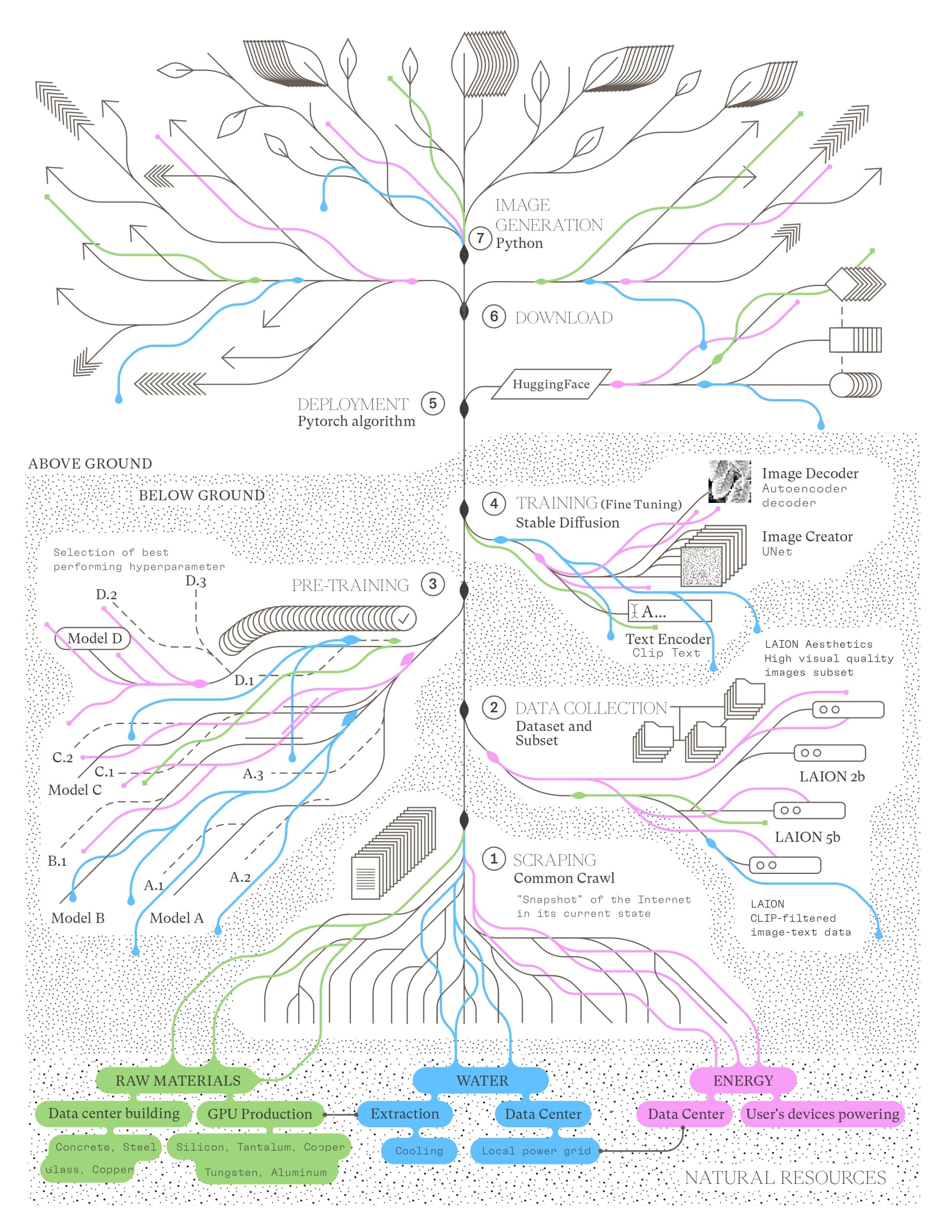Water footprint
What is the Water Footprint of an image produced with Artificial Intelligence?
When we talk about the concept of Water Footprint (WF), we refer to the amount of water used in the manufacturing or production process of a given good or service throughout its life cycle. In the context of an image generated using an Artificial Intelligence (AI) model, water consumption is also incurred, which is calculated taking into account both the preparation of the AI model and the creation of the image itself. What will be the water footprint of producing an image with Artificial Intelligence? Specifically, the generation of the images for the Hybrid Ecologies exhibition means a consumption of about 32 ml per image, but what does this mean, what does this value imply exactly?
A calculation of the HH of an image generated by
Stable Diffusion, an open source AI designed to produce images from natural text, means distinguishing two stages in the production of images.
The first stage is the preparation of the Stable Diffusion model, which takes place in a data center in the United States. This stage consists of three steps, whose HH is calculated separately: data collection, pre-training and AI training. For the collection stage, the HH of the data transfer by the data center is calculated, and for the pre-training and training stages, the HH of the processing is considered.
The second stage is the creation of the images, the production of each image takes 78 seconds, and for the calculation of the HH this is considered to occur in a data center located in Chile. In this place there is a Google virtual server called n1-standard-4, which uses a GPU type NVIDIA Tesla T4. This type of server can have 1, 2 or 4 GPUs for the creation of each image.
The calculation results indicate that within the first stage, the HH of the data collection step is 7.14 liters. On the other hand, between pre-training and training, the HH on average was 132.44 M³. As for the image generation stage, the amount of water consumed is 32 ml.
Water footprint training
Water footprint imaging



